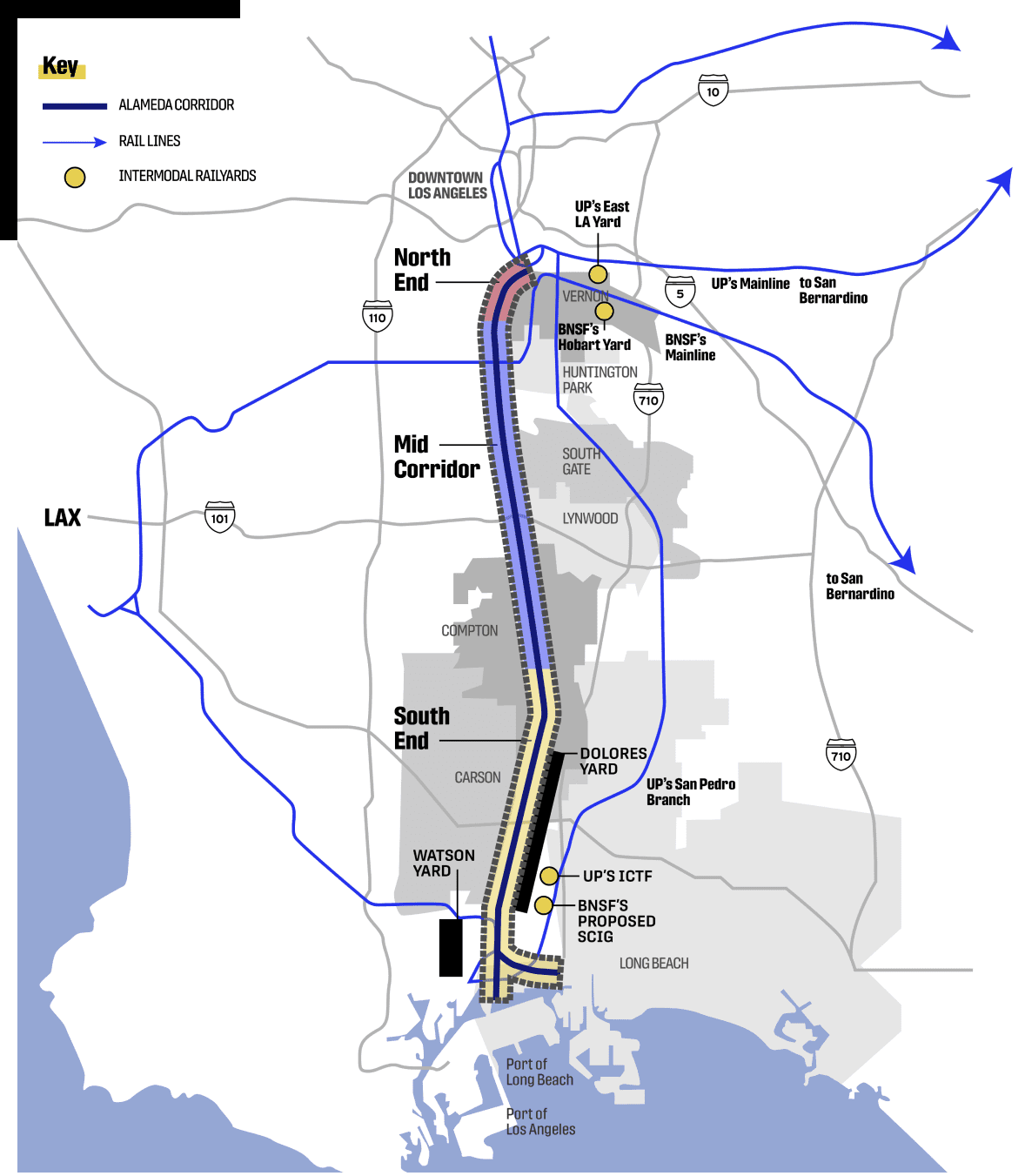ALAMEDA
BELT LINE
WELCOME TO CALIFORNIA’S FREIGHT FUTURE


The Alameda Corridor holds immense potential for bolstering the region’s economic growth, acting as an essential transportation link that connects the bustling San Pedro Bay ports to major inland distribution hubs in Southern California and across the nation. Recognizing this opportunity, the Alameda Belt Line offers a transformative solution to make freight transportation in the Alameda Corridor more efficient, reliable, and environmentally sustainable.
Who We Are
The Alameda Belt Line (ABL) was created as a neutral third party to optimize freight mobility and elevate the global competitiveness of the San Pedro Bay ports, which are critical to the regional and national economies. This joint venture brings together two of the nation’s leading Class I railroads, BNSF Railway and Union Pacific Railroad, to reshape the landscape of logistics and drive greater efficiency. We leverage generations of experience, considerable resources, and a shared commitment to sustainable growth to significantly enhance rail operations and streamline the secure movement of goods at these vital transportation hubs.


We’re excited about this partnership because it brings together the latest technology and better access to information. This means we’ll see more efficiency at the San Pedro Bay Ports and along the Alameda Corridor, giving us a real edge in global freight mobility.”
— MARTIN YARNALL
ALAMEDA BELT LINE CEO
KEY FEATURES
Integrated dispatch from the ports to the top of the Alameda Corridor, with 24/7 availability and responsiveness
Creation of an in-house law enforcement team working with local police to promote a safety-first culture, keep trains moving and decrease theft in transit
Rail-owned, independent entity is a proven model for deeper operational integration between maritime operations and railroad
Real-time monitoring and coordinated strategy, balancing freight flows, and decreasing congestion and related dwell
Commitment to maintain and grow local jobs
Reduced carbon footprint from reduced emissions and the ability to leverage R&D being done by the Class 1 railroads
KEY BENEFITS
Experience
- Offers the resources and deep industry knowledge of two leading Class 1 railroads
- Brings centuries of combined experience operating in California
- Builds on over 20 years of operations in the Alameda Corridor


Efficiency
- Simplifies and streamlines operations between San Pedro Bay ports and Redondo Junction
- Establishes a fully integrated, unified operating plan
- Reduces dispatching and handoff inefficiencies, increasing capacity
- Transportation costs are reduced through efficient operations and new technology
Competitiveness
- Unlocks shipping capacity at the San Pedro Bay ports and maximizes use of the Alameda Corridor
- Improves long-term efficiency by increasing additional system capacity through data-driven focus and investments
- Enhances the value proposition and cost structure for the U.S. West Coast ports


Technology
- Brings the latest advancements in technology and data-driven solutions to improve rail operations
- Harnesses significant investments in technology to ensure safety
Environment
- Shifts cargo from truck to rail, the most environmentally friendly way to move freight on land
- Commits to good environmental stewardship practices
- Leverages industry leadership in development and testing of new technologies to reduce emissions

ABOUT THE ALAMEDA CORRIDOR

| 01 | 20-mile freight line |
| 02 | Primarily below-grade triple-track |
| 03 | Moves 4M+ TEUs of intermodal cargo per year |
The Alameda Corridor is a 20-mile freight rail line located in southern Los Angeles County, California, running from the ports of Long Beach and Los Angeles to downtown Los Angeles, primarily along and adjacent to Alameda Street. The corridor consists primarily of below-grade, triple-track mainline, which allows for efficient, safe, and reduced-noise travel through regional neighborhoods. Both BNSF Railway and Union Pacific trains have trackage rights in the corridor. Each year, the line handles 40,000 carloads of manifest and more than 4 million TEUs of intermodal cargo, but has the capacity to handle significantly more trains per day.

© Alameda Belt Line 2024.
All rights reserved.

